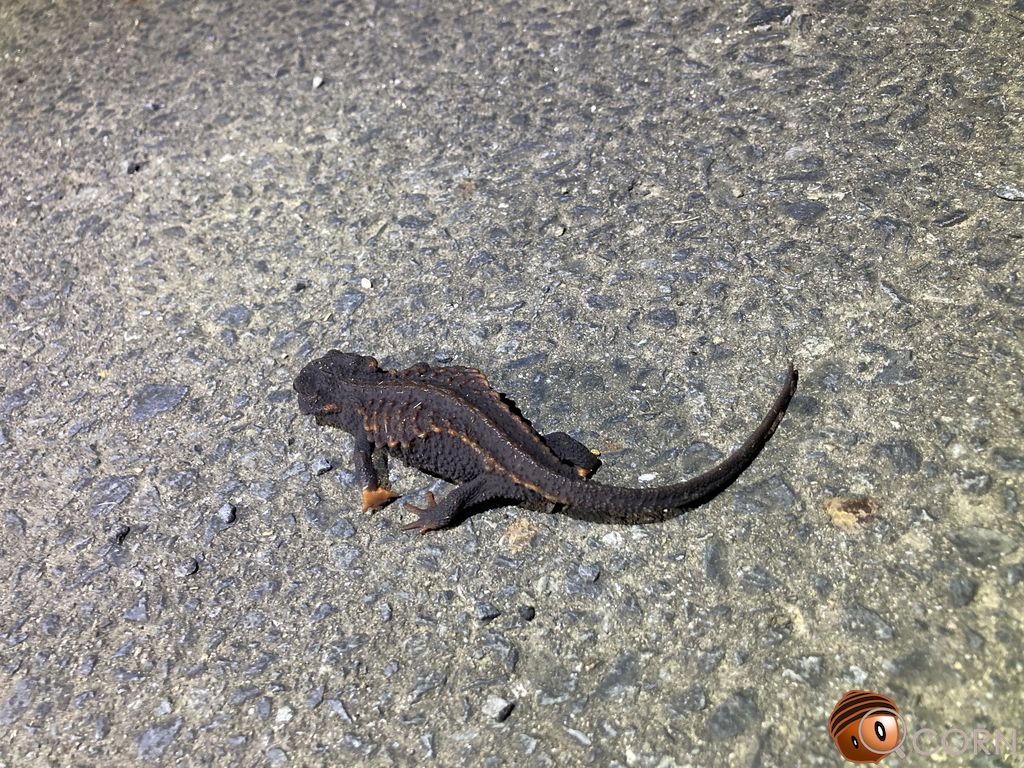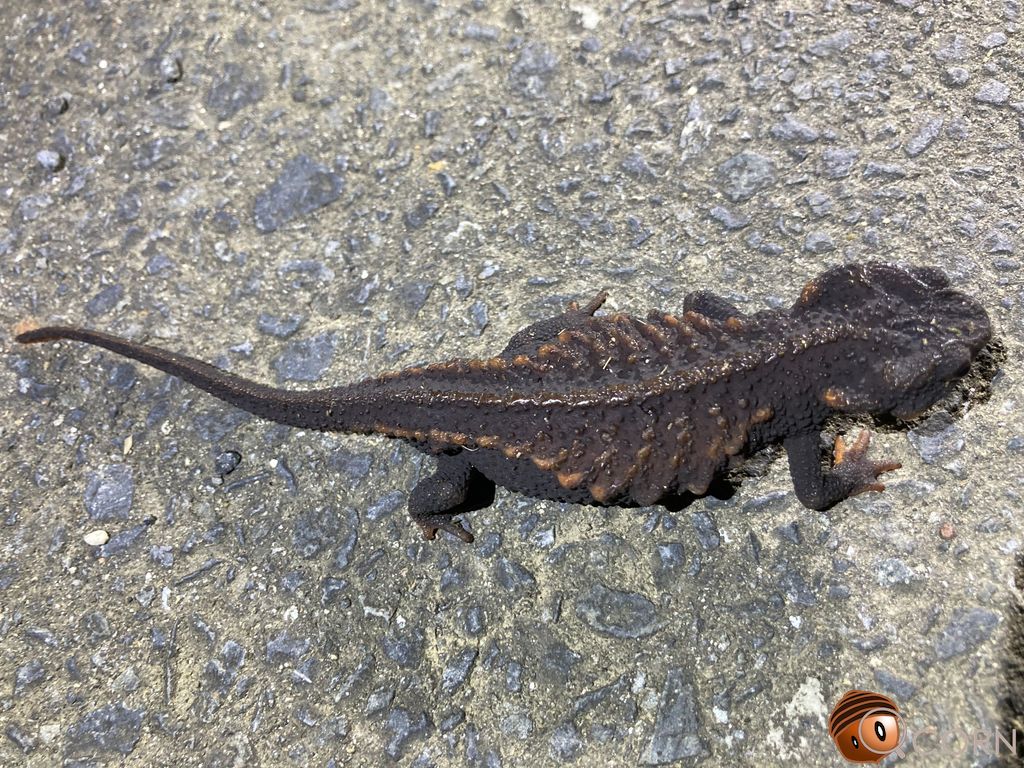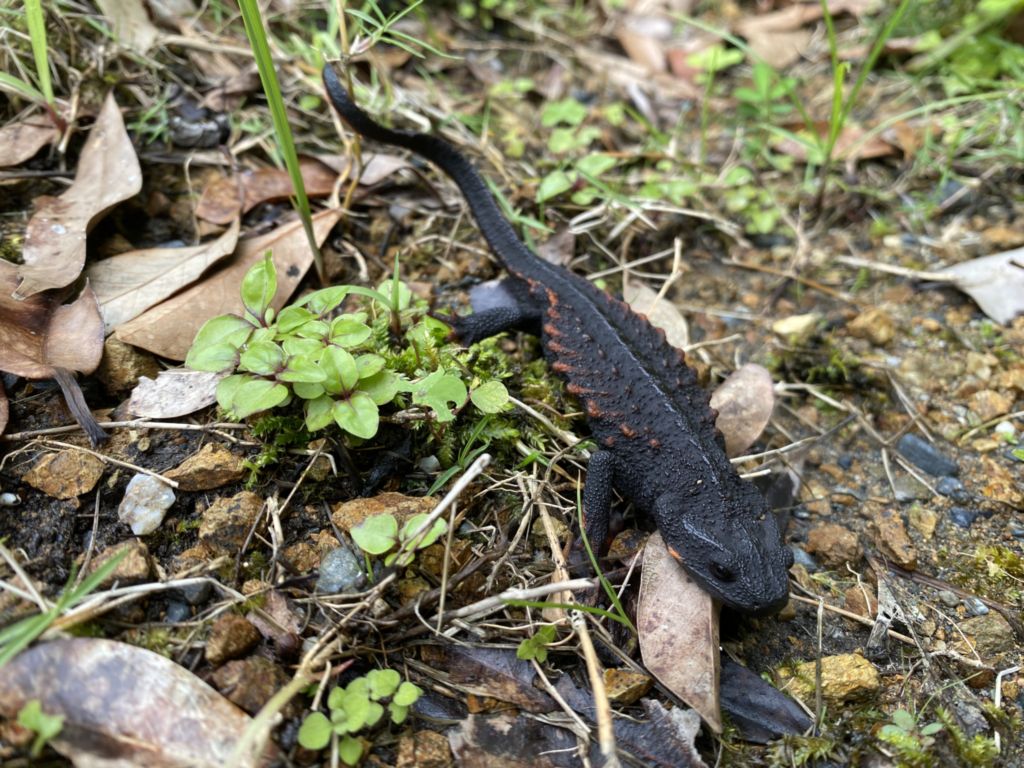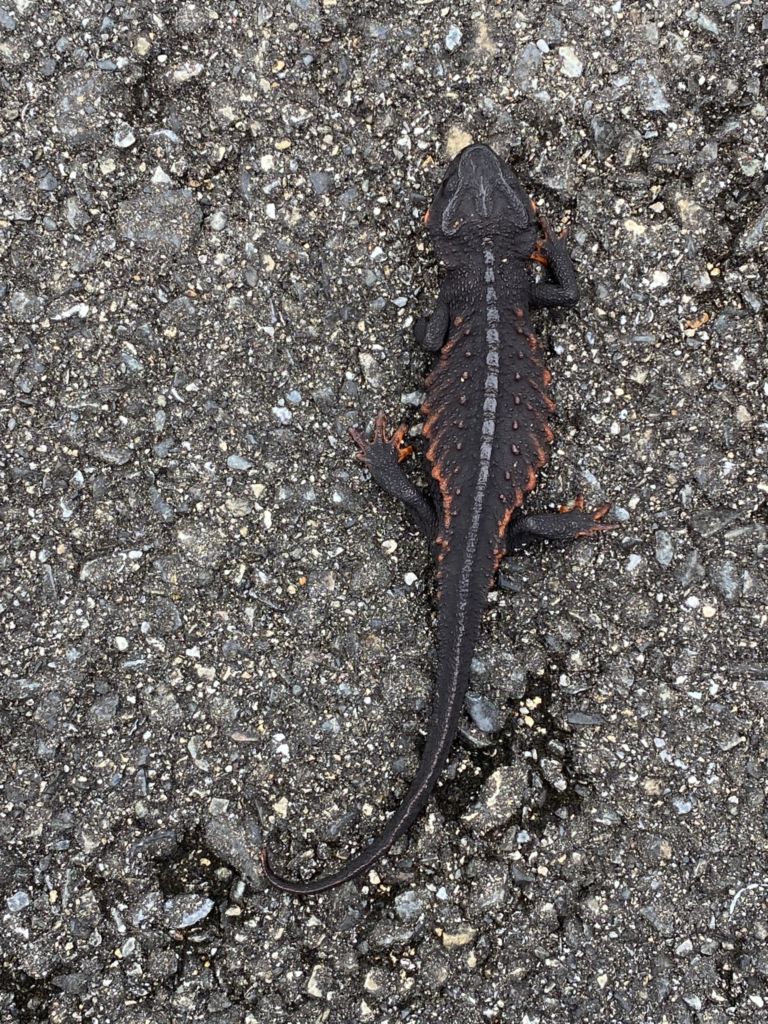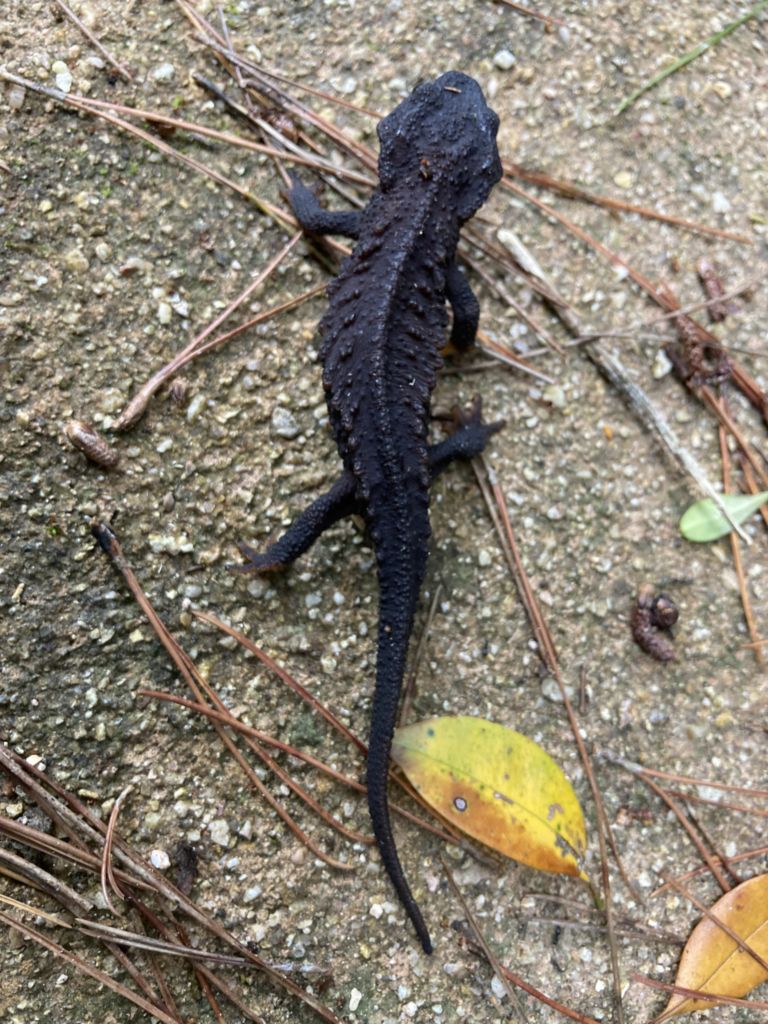Echinotriton raffaellii
Japanese name: アマミイボイモリ
Chinese name: 奄美棘螈
English name: Amami Spiny Newt
Origin: Tokunoshima, Amami Oshima, Ukeshima
This species is one of the most primitive members of the salamander family, often referred to as a “living fossil.” It is named for its protruding ribs on both sides of its body. The population is scarce and under threat from poaching.
In 2022, the populations on Amami Oshima and Tokunoshima were classified as a new species, Echinotriton raffaellii, named after French caudate expert Dr. Jean Raffaëlli. The Japanese common name for the Amami populations was changed from the Ryukyu Spiny Newt (イボイモリ) to the Amami Spiny Newt (アマミイボイモリ).
The Amami Spiny Newt is slightly smaller than the Okinawa Spiny Newt, with more prominent rib protrusions, sometimes with orange-red tips. The population on Amami Oshima is smaller than that on Tokunoshima, likely due to competition with the Amami Sword-tailed Newt (Cynops ensicauda ensicauda), which may have impacted the Amami Spiny Newt’s numbers on the island.
The genus Echinotriton includes two other species: the Chinhai Spiny Newt (Echinotriton chinhaiensis), found in Zhejiang Province, China, and the Mountain Spiny Newt (E. maxiquadratus), distributed in southern China. These species support the theory that the Central Ryukyu Islands were once connected to the mainland.
Reference: Author’s website
